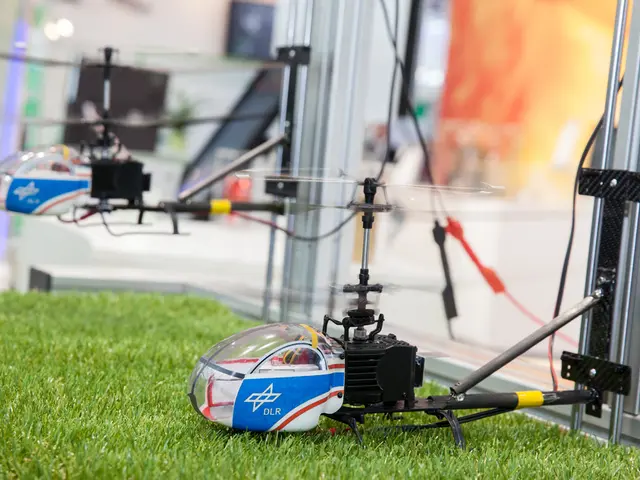Internet Evolution Over Three Decades: Witnessing India's Transition from Dial-up to 5G by 2025
In 1986, India embarked on its internet journey with the launch of ERNET (Education and Research Network), connecting premier institutions such as IITs and IISc for academic and research communications [1]. This was the first step in a long journey that would transform the way Indians work, learn, shop, play, and share their lives.
Fast forward to 1995, and India took another significant step with the launch of its first public internet service by Videsh Sanchar Nigam Limited (VSNL) [2]. This marked the beginning of internet access for the general public, although speeds were initially under 9.6 kbps and the service was primarily used by offices and institutions due to its high cost.
The mid-2000s brought a shift in India's digital story, with mobile internet becoming accessible to people outside of offices and institutions. This period also saw the introduction of broadband technology by the government, opening the door to faster and more reliable internet [1].
By 2010, mobile internet and wireless broadband had gained popularity, expanding internet accessibility beyond fixed lines [1]. The arrival of 3G and later 4G technologies made the internet quicker, smoother, and more accessible in India.
Today, India has entered the 5G era, offering fast speeds and almost zero lag. This advancement brings technologies like self-driving cars and AI that feel almost human closer to reality [5]. As of 2023, over 700 million active internet users were reported in India, with around 400 million of these users being in rural areas [4].
This progression reflects India’s movement from restricted, academic networks to widespread, high-speed connectivity crucial to digital transformation and marketing innovations since the late 1990s [3].
While the exact date for the launch of mobile internet services in India is not provided, it was a significant growth point in India's internet usage. The cost and speed of mobile internet services have significantly improved over the years, but the specific improvements after the introduction of 5G are not detailed in the text. As for the cost and speed of India's current 5G services, the text does not provide this information.
References:
[1] NITI Aayog (2020). India@75: Towards a New Digital India. Retrieved from https://niti.gov.in/writereaddata/files/document_publication/India@75_Towards_a_New_Digital_India.pdf
[2] Internet Hall of Fame (2021). VSNL - Videsh Sanchar Nigam Limited. Retrieved from https://www.internethalloffame.org/inductees/videsh-sanchar-nigam-limited/
[3] The Indian Express (2021). The evolution of the internet in India: From ERNET to 5G. Retrieved from https://indianexpress.com/article/explained/the-evolution-of-the-internet-in-india-from-ernet-to-5g-7685295/
[4] Statista (2023). Number of active internet users in India from 2000 to 2023. Retrieved from https://www.statista.com/statistics/268376/number-of-active-internet-users-in-india/
[5] The Economic Times (2021). What 5G in India means for businesses and consumers. Retrieved from https://economictimes.indiatimes.com/tech/hardware/what-5g-in-india-means-for-businesses-and-consumers/articleshow/88505984.cms
As the mid-2000s approached, mobile internet became accessible to people outside of offices and institutions, representing a significant shift in India's digital story [1]. Additionally, this period also saw the government's introduction of broadband technology, leading to faster and more reliable internet access [1].




